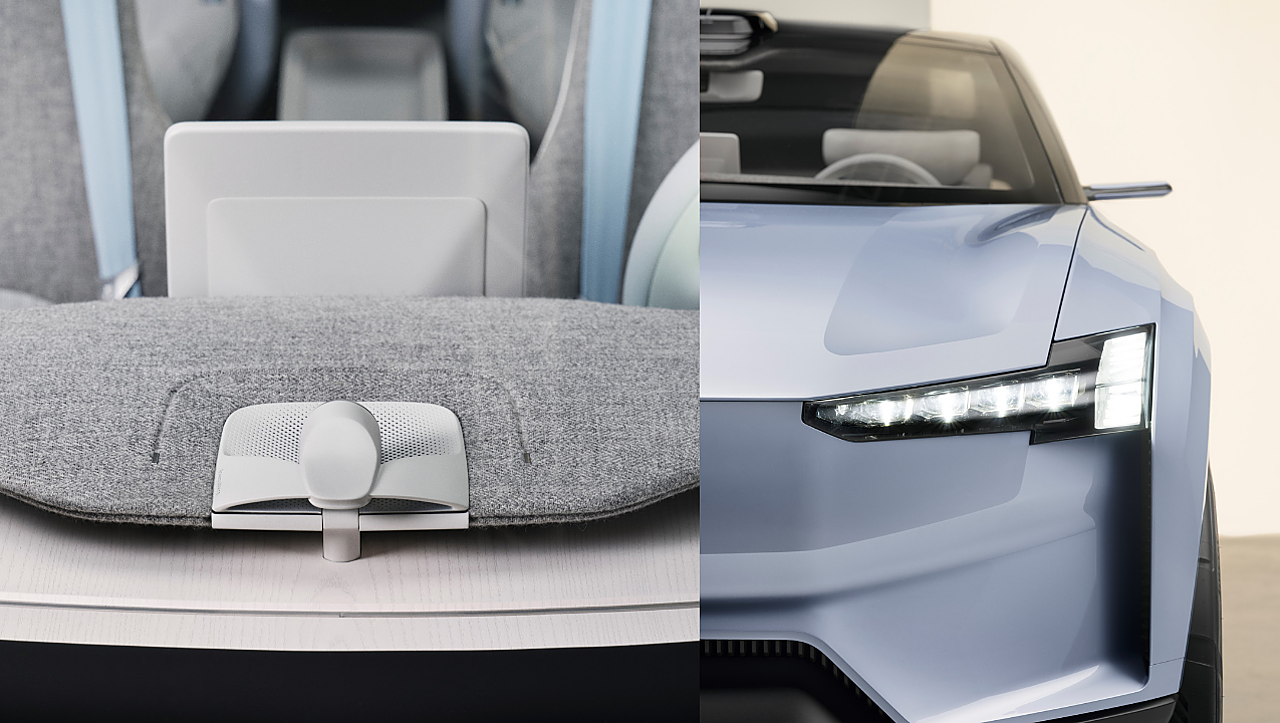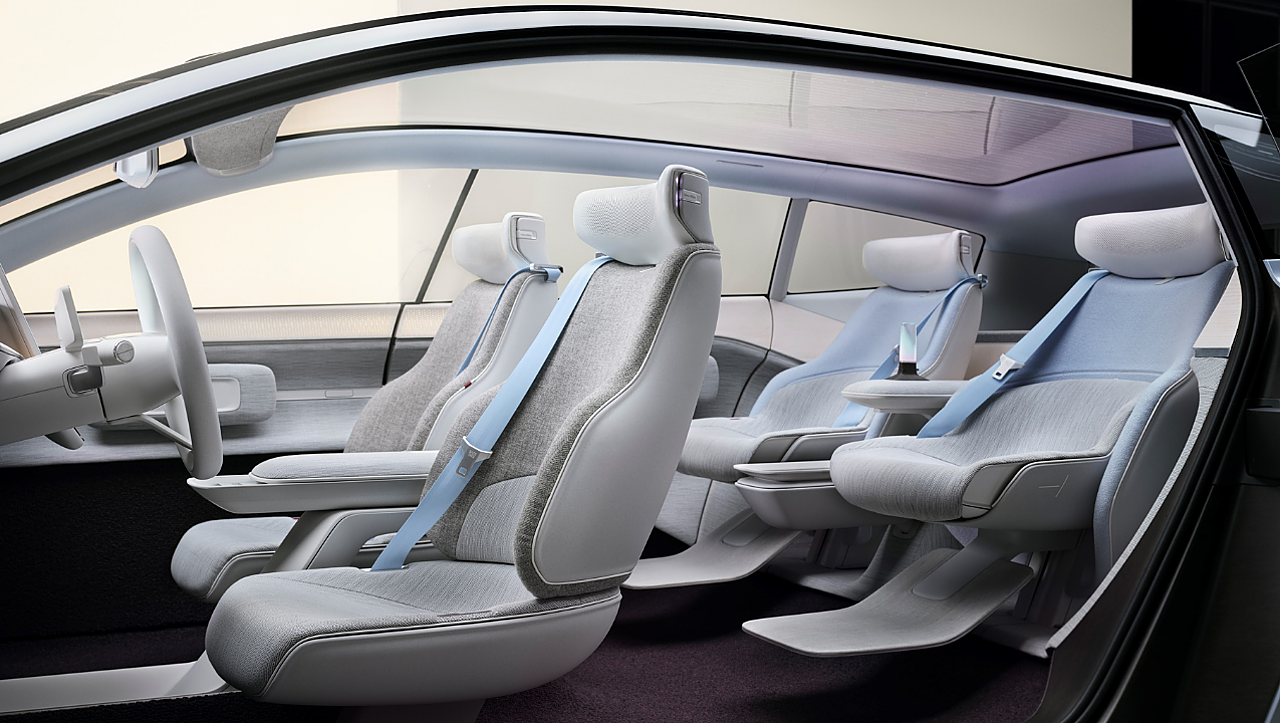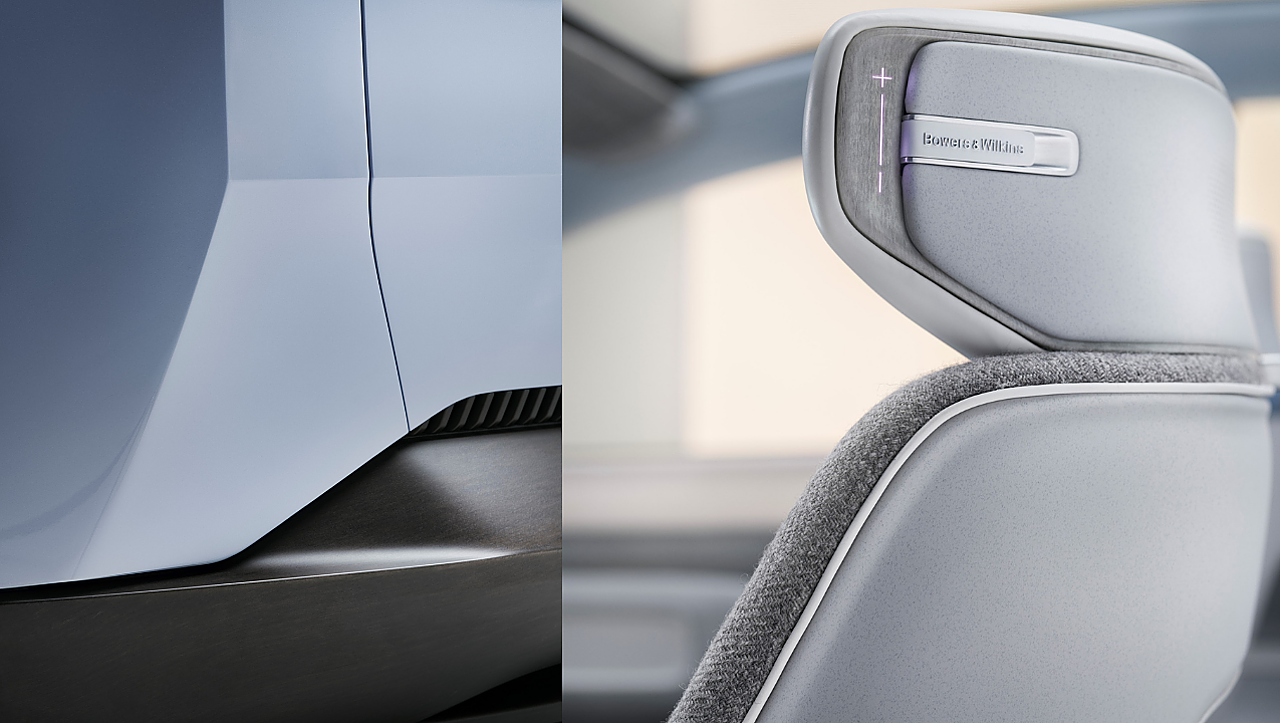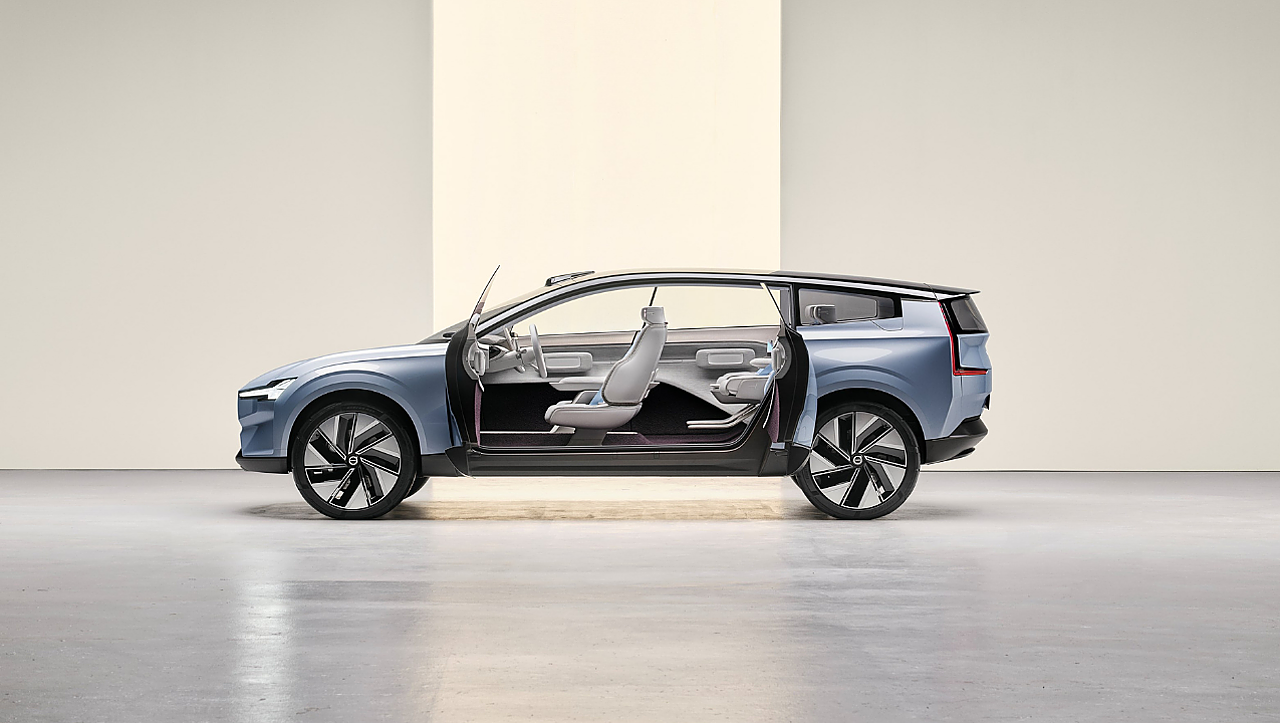
Volvo Cars is at the forefront of working with sustainable and natural materials in its cars, and the Concept Recharge is another proof point of its commitment to push forward with this ambition.
Less than a fortnight ago, Volvo Cars’ boss Hakan Samuelsson joined industry and government leaders to sign the Glasgow Declaration on Zero Emission Cars and Vans at the UN climate change conference COP26.
Simultaneously, to further accelerate its carbon footprint reduction, the carmaker also announced the introduction of an internal carbon price of SEK 1,000 for every tonne of carbon emissions from across its entire business, in line with its ambition to become a climate-neutral company by 2040.
The Glasgow Declaration, unveiled as part of World Transport Day at COP26, signals a commitment by industry leaders and governments to phase out fossil-fuel vehicles in leading markets by 2035 and globally by 2040. However, the company has its own climate action targets that go above and beyond the commitments in the Glasgow declaration. Already by 2025, it expects more than half of its global sales to consist of fully electric cars. By 2030, it aims to be a fully electric car maker and sell only pure electric cars.
Now the question is how the vehicle manufacturer is going to script its strategy to accomplish these objectives. As part of its manifesto for the future, the pure electric Concept Recharge, revealed last July, does much more than showcase its future design language and product strategy.
With the Concept Recharge, the company demonstrates the steps it will take in all pure electric car development areas to reduce its overall carbon footprint.
Sustainable Materials
By using sustainable materials inside the car, equipping it with tyres from recycled and renewable material, improving aerodynamics and other measures, the carmaker is taking significant steps to reduce its carbon impact through the car itself.

When combining those steps with the use of clean energy throughout a decarbonised supply chain, manufacturing process and use phase of the car, the OEM believes that it can reduce a car’s lifecycle CO2 impact by 80% versus a 2018 Volvo XC60, without losing its inherent premium qualities. Furthermore, it implies that the Concept Recharge would have an overall lifecycle CO2 impact below 10 tonne when charged with 100% renewable energy.
Owen Ready, Head of Strategic and Brand Design, Volvo Cars, says, “The easy approach is to add more batteries, but it is not the same as simply adding a bigger fuel tank today – batteries add weight and increase carbon footprint. Instead, we have to increase overall efficiency to increase range. With Concept Recharge we explore the tension between the need for efficiency and the desire for the same space, convenience and driving experience as in today’s SUVs.”
The interior design is rich in sustainable materials, both natural and recycled materials. Responsibly sourced Swedish wool is transformed into an entirely natural breathable cloth, free from additives. This warm and soft material is used in the seat backrest and instrument panel top. Meanwhile, the floor and lower doors are covered by a rich carpet of 100% wool.
The seat cushions and touch surfaces on the door are made from an environmentally responsible material containing cellulose Tencel fibres. This fabric has improved durable strength and is soft to the skin. In addition, by using Tencel fibres, which have been produced through high water- and energy-efficient processes, the designers can reduce the use of plastics in interior parts.

The seatbacks and headrests, and part of the steering wheel use a new material created by the company called Nordico. It is a soft material made from bio-based and recycled ingredients that come from sustainable forests in Sweden and Finland, providing a CO2 footprint that is 74% lower than leather.
Elsewhere in the interior, including in the lower storage areas, back of the headrest and the footrest, the car is provided with a flax composite, developed by the company in collaboration with suppliers. It uses fibres from the linseed plant mixed with composites to provide a strong and lightweight yet attractive and natural aesthetic.
On the exterior, the front and rear bumpers and the sill mouldings also consist of flax composite. Using a flax composite both inside and out in this way results in a significant reduction of plastics used.

According to Lisa Reeves, Head of Interior Design, the company has created a comfortable and functional family space for the concept car. The cabin offers sophisticated forms through the use of natural materials and the harmonisation of textures and tones, reflecting the timeless elegance of premium Scandinavian design.
ICE Out, E-powertrain IN
With the internal combustion engine making way for the pure electric powertrain, tyres play an even more critical role. Not only are they crucial for safety, but they also contribute largely to the vehicle’s battery range. Therefore, tyres for electric cars always have to be on top of technology development.
Hence the Concept Recharge feature special tyres made by Pirelli, which are completely free from mineral oil and are made from 94% fossil-free materials, including recycled and renewable materials such as natural rubber, bio-silica, rayon and bio-resin. It reflects the circular approach shared by the OEM and the tyre maker, focusing on reducing resource consumption and environmental impact.

Enhancing Efficiency Through Aerodynamics
Beyond its sustainable materials, electric powertrain and special tyres, Concept Recharge also improves the environmental credibility of SUVs through efficiency and aerodynamics. With the Concept Recharge, the carmaker envisages the future of aerodynamics. It incorporates innovative aerodynamic features such as exterior design details that smoothen the airflow, a new wheel design, a lower roof and a more upright rear end.
As such, it takes the classic SUV shape and improves airflow to increase range while offering the incredible space opportunities that come naturally with an electric car and its lower floor.
While consumers continue to drive demand for the benefits of SUVs, Volvo Cars is determined to produce vehicles that offer all the safety and comfort they look for, as well as slash their environmental impact, Ready adds.